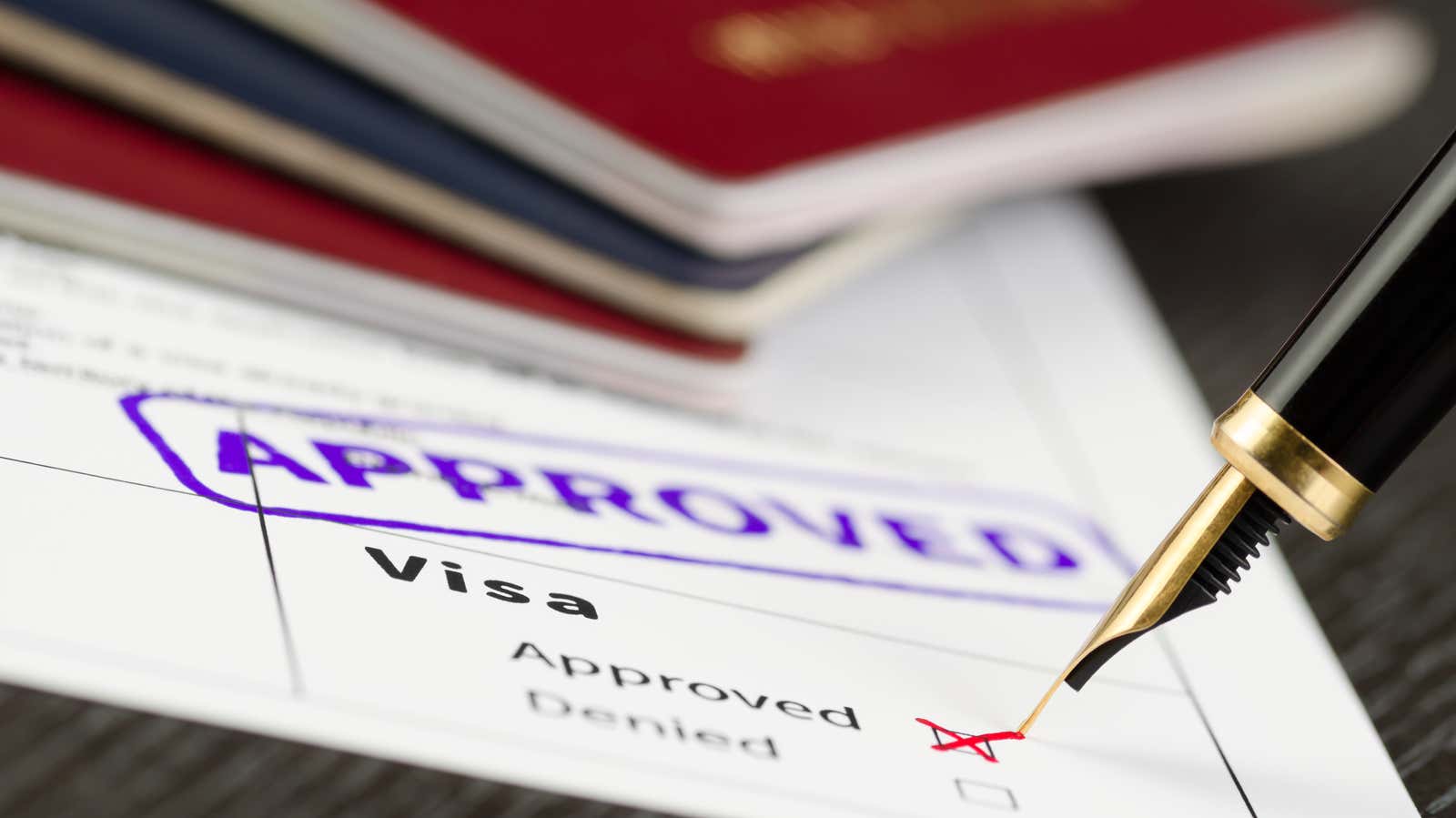How to Get a Visa

International travel involves many moving parts, from obtaining a passport and booking a route to budgeting a trip and learning the basics of language and local customs. An additional component that you may need to find out if you need a visa. Fortunately, the United States has a visa-free regime for travel to 184 countries around the world. However, in many countries such as Cuba, China and Ghana, US citizens are required to obtain a visa before boarding a flight.
What is a visa?
A visa is a permit or approval from another country that gives you the ability to cross international borders and enter their country. It can be a real sheet of paper, large enough to fit in your passport, or a stamp with the date of entry and exit. This allows International Customs and Immigration to know that you have passed the proper parameters to travel to their country, which may include a background check, health check, or detailed interview.
There are also several types of visas, including tourist, transit, work, student and residence. The type of visa you are applying for will depend on the nature of your travel. Are you going to school there? Do you work there? Will you be staying there longer than the designated “tourist” time?
You can find a list of countries that require visas for US citizens here .
Application
In countries that require a visa, there are consulates: an office where you can submit everything you need to obtain a visa. After you make an appointment, they will ask you to provide all the necessary documents, and in some cases, they will request an interview to find out the nature of your travel.
Some requirements for applying for a visa may include but are not limited to:
- Travel itinerary (accommodation booked, outbound flight booked)
- Additional passport-sized photos
- Immunization records
- Proof of income level
- At least 6-12 months before the expiration of the passport
- The number of blank pages in the passport marked “Visa”
Several countries now offer e-Visa. With an e-Visa, you can apply, pay and check the status of your application directly online. Once approved, you can print the confirmation and receipt to take with you on your trip. India has a sample of what the e-Visa process looks like.
Other countries have so-called “on arrival” visas. These visas are acquired after you land and are placed on your visa before you enter the immigration window. In a country like Egypt, you can bring $ 25 to buy a visa at the pre-immigration window. After you pay the fee, they will stick their visa sticker on one of the pages of your passport that says “Visa”.
If you forget to purchase a visa on arrival before entering any country’s immigration office, they will redirect you to the visa application window.
Validity
Each country has a certain length of stay for foreigners. Your tourist visa will indicate the expiration date or the date you must leave. Some visas may be valid for a long time, but your stay may expire in a shorter period. For example, a country may grant you a tourist visa for 5 years, but that does not mean that you can stay in it for 5 years. Most countries are allowed to stay between 30 and 180 days, but you will have to leave before those days expire; if your visa is valid for a longer period, this means that you can return again without applying for a new visa.
Failure to leave after obtaining a visa or authorized stay may result in a fine, deportation or imprisonment.